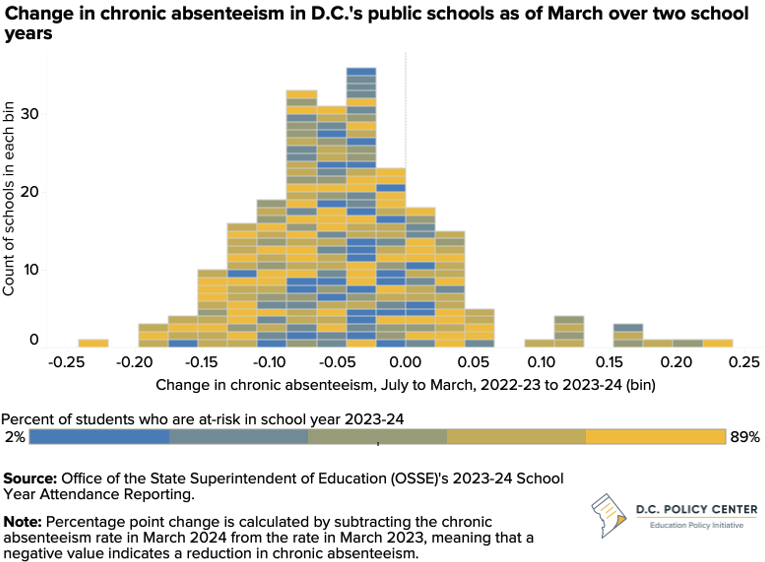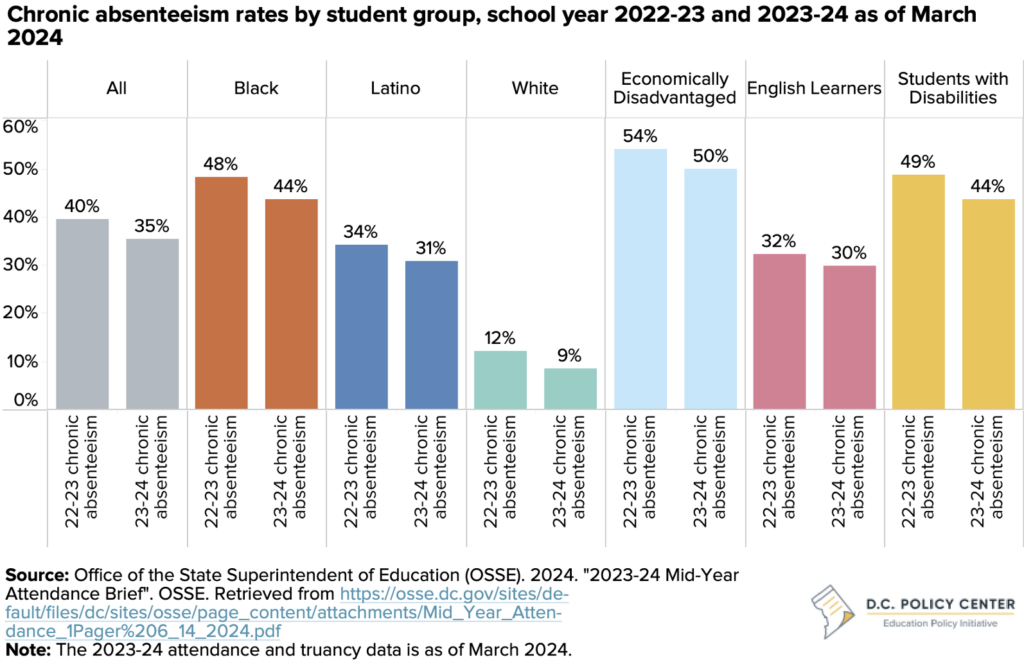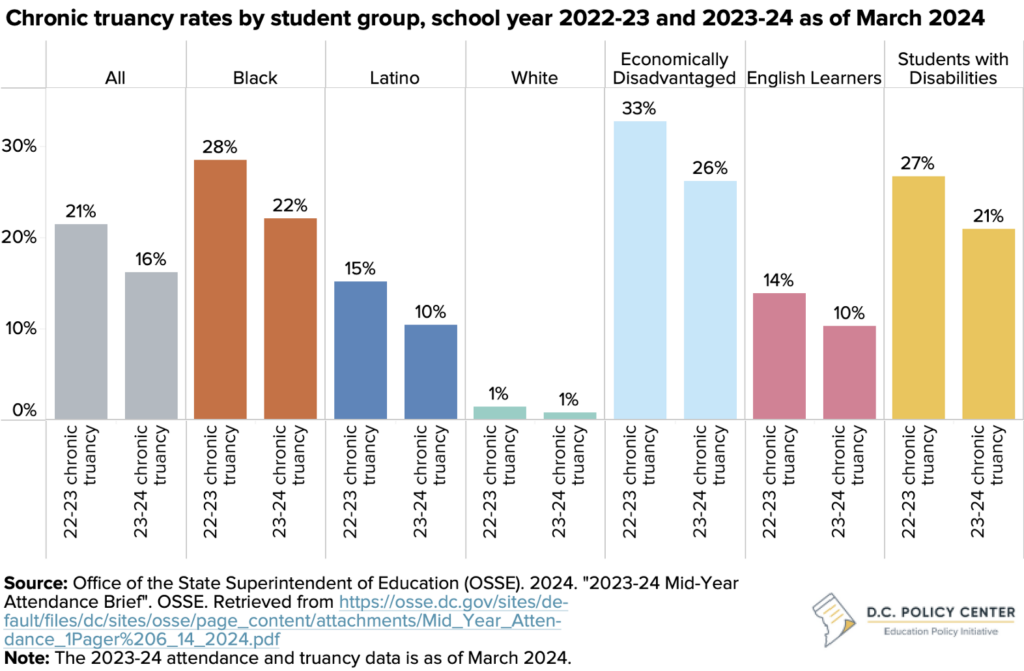

On Wednesday, November 13, 2024, Senior Education Research Analyst Hannah Mason testified before the D.C. Council Committee of the Whole at its chronic absenteeism and truancy hearing. Her testimony focuses on chronic absenteeism rates as of March, stakeholders’ perceptions of attendance including new reasons for missing school, and school leader insight on effective and less effective attendance strategies. You can read her testimony below, or download a PDF copy.
As of March 2024, data show that across all D.C.’s public schools, chronic absenteeism improved by 4.3 percentage points over the same time during the previous year, and a majority of schools improved by at least one percentage point.1 Chronic truancy, which focuses on unexcused absences only, has improved by 5.2 percentage points, with economically disadvantaged students seeing the biggest drop in chronic truancy at 6.6 percentage points.2 This is encouraging for pandemic recovery because more students are attending school consistently, which means more students are accessing the support needed to address learning loss, but it is not enough to return to pre-pandemic levels.






Insights from D.C. Policy Center listening sessions may help explain why chronic absenteeism numbers remain higher than pre-pandemic levels. In summer 2024, we held listening sessions with students, parents/caregivers, and teachers, and asked about perceptions and attitudes toward attendance. In these listening sessions, some of the same reasons for absenteeism that came up in other post-pandemic listening sessions were mentioned, including mental health challenges amid an uptick in violent crime, illness as a reason due to COVID or otherwise, shorter days, especially leaving school early, in-school person seeming less necessary especially for older students, the option to make up work virtually, less perceived accountability, and some parents believing that attendance records aren’t accurate. We also heard some new reasons from multiple groups, including knowing a substitute teacher would be present and oversleeping or lengthy morning routines.
Speaking with school leaders about attendance is important because they play a
critical part in crafting and implementing policies that directly impact attendance. Interviews with school leaders across all grade levels and sectors who have seen significant decreases in chronic absenteeism—while serving at least the city average of students designated as at-risk—revealed both promising and less effective attendance strategies. Among these leaders, most indicated that increasing student check-ins contributed to attendance improvements, and most noted that fostering adult-student relationships also supported attendance improvements. All school leaders reported that students who missed school more often tended to have lower academic achievement. Punitive measures, such as reports to the D.C. Child and Family Services Agency (CFSA) and the Office of the Attorney General (OAG), were deemed the least helpful strategies, with fewer than half of respondents finding them beneficial. Lastly, transportation was identified as the most persistent barrier to attendance, cited by the majority of respondents.
D.C. is making concerted efforts to reduce chronic absenteeism and truancy. Reducing absenteeism has been a major goal for government agencies, nonprofits, and other stakeholders in the District. As part of this work, the Office of the State Superintendent of Education (OSSE) signed on to Attendance Works, EdTrust, and Nat Malkus from American Enterprise Institute (AEI)’s nationwide chronic absence challenge to reduce chronic absence by 50% in 5 years.3 Early data shows that absenteeism is decreasing in D.C., which is a positive sign. Continuing to implement promising strategies and learning from schools experiencing attendance growth is critical to ensuring students attend school regularly.
Endnotes
- Coffin, C. 2024. “Chart of the week: Amid widespread reductions in chronic absenteeism, about half of schools saw an improvement in learning outcomes this part year.” D.C. Policy Center. Retrieved from https://www.dcpolicycenter.org/publications/chart-of-the-week-despite-reductions-in-chronic-absenteeism-schools-saw-improved-learning-outcomes/
- Office of the State Superintendent of Education (OSSE). 2024. “2023-24 Mid-Year Attendance Brief”. OSSE. Retrieved from https://osse.dc.gov/sites/default/files/dc/sites/osse/page_content/attachments/Mid_Year_Attendance_1Pager%206_14_2024.pdf
- Attendance Works. “States participating in the 50% challenge.” Attendance Works. Retrieved from https://www.attendanceworks.org/states-participating-in-the-50-challenge/
